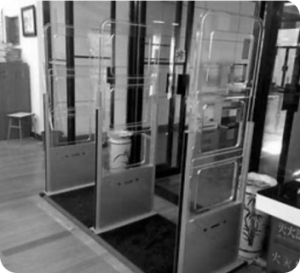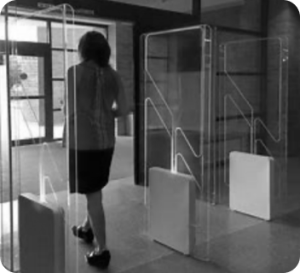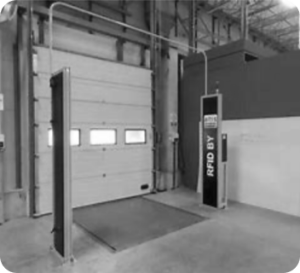RFID Readers
RFID Readers constitute one of the three basic elements of remote radio identification systems. The devices read the information contained in RFID tags and labels.
They are installed on ramps, above conveyor belts, in entrance gates and in other places where data reading is needed.
RFID readers collect data from tags when the items marked with them are nearby (e.g. moving along the production line or being transported on forklifts).
There are several types of such devices:
- mobile and stationary RFID readers,
- integrated and not integrated with the RFID antenna.
RFID gateways
RFID gates are stationary readers that are used in:
- warehouses and transport (including detecting the direction of movement of objects),
- commercial chains (anti-theft gates),
- pharmacy (allow for inspection of bulk containers at the loading gate),
- logistics (in container terminals and parking lots they enable the identification of vehicles at key points and the issuance of passes),
- automotive industry and assembly (they help control whether the finished product contains all the elements it should have).
Mobile RFID readers
Mobile RFID readers are small, hand-held devices and models mounted, for example, on forklifts.
This type of readers is used, among others, in:
- warehouses (they automatically read the pallet picked up by the forklift operator and allow for quick inventory),
- production halls (collect information on the current status and stage of the order, product specifications),
- jewelry (hand-held RFID readers enable regular inventory of valuable items without having to remove them from the display case or cabinets),
- pharmacy (they help check whether the security of shipments has been compromised),
- hospitals (facilitate inventory of resources and optimization of order and delivery planning),
- laboratories (an employee will read all samples with one reader, e.g. from a cabinet, container or collective packaging),
- archives (hand-held devices allow you to find any files within the facility in a few minutes).
Stationary RFID readers
Stationary RFID readers are permanently attached to one specific place. You can connect antennas to them, which will extend the reading range, which is why these devices work well on large surfaces.
They are installed, among others: in:
- warehouses
- production halls (production lines automatically detect each product and their status),
- logistics (they help, among others, automatically weigh vehicles),
- jewelry (placed on the shelves allow you to track and control all products in the store),
- laboratories (devices monitor the movement of samples within the laboratory and, placed under the table, automatically read test tubes when an employee puts them down at his or her workstation).


